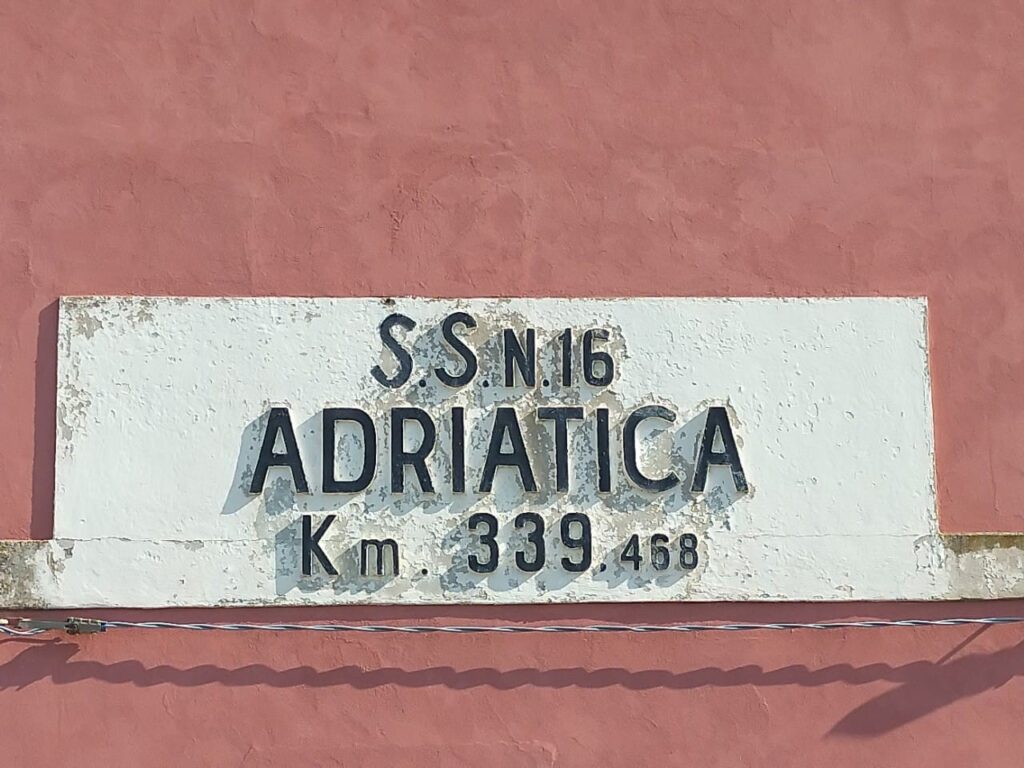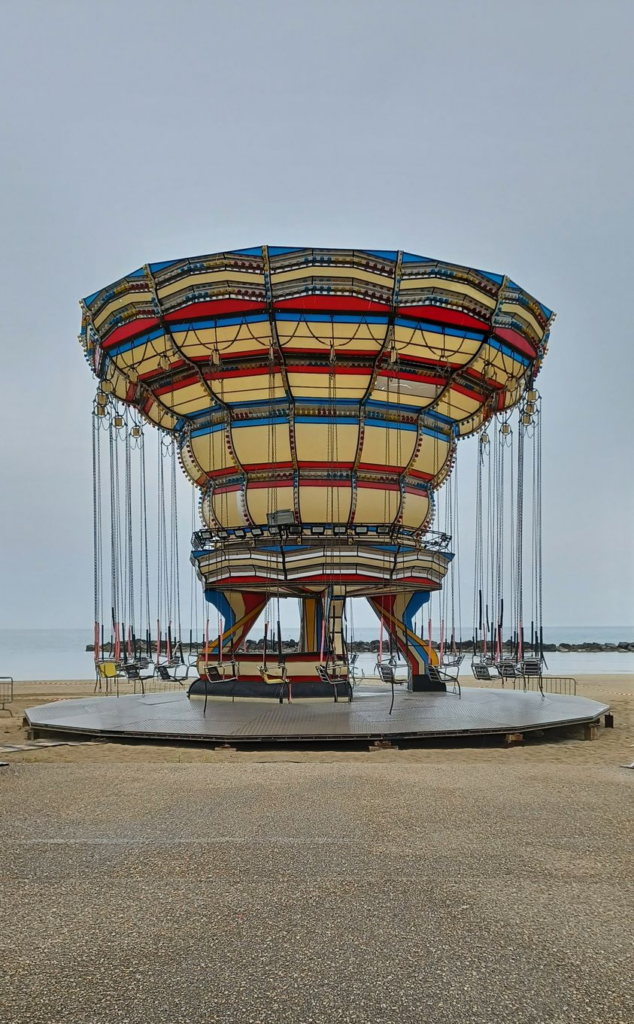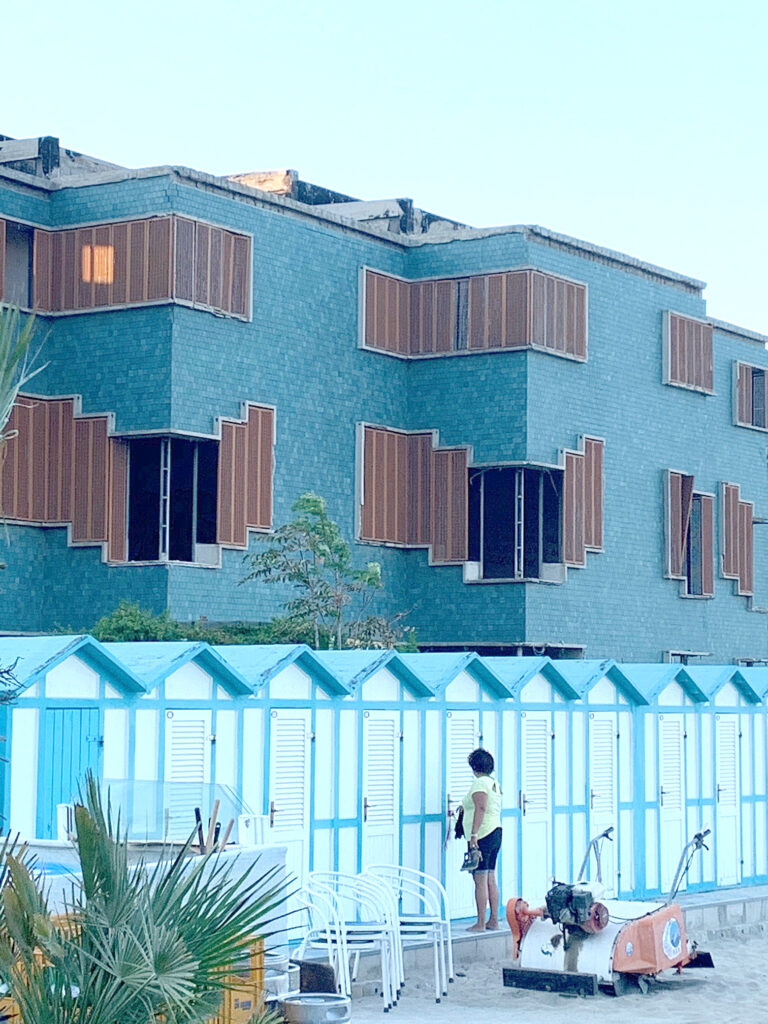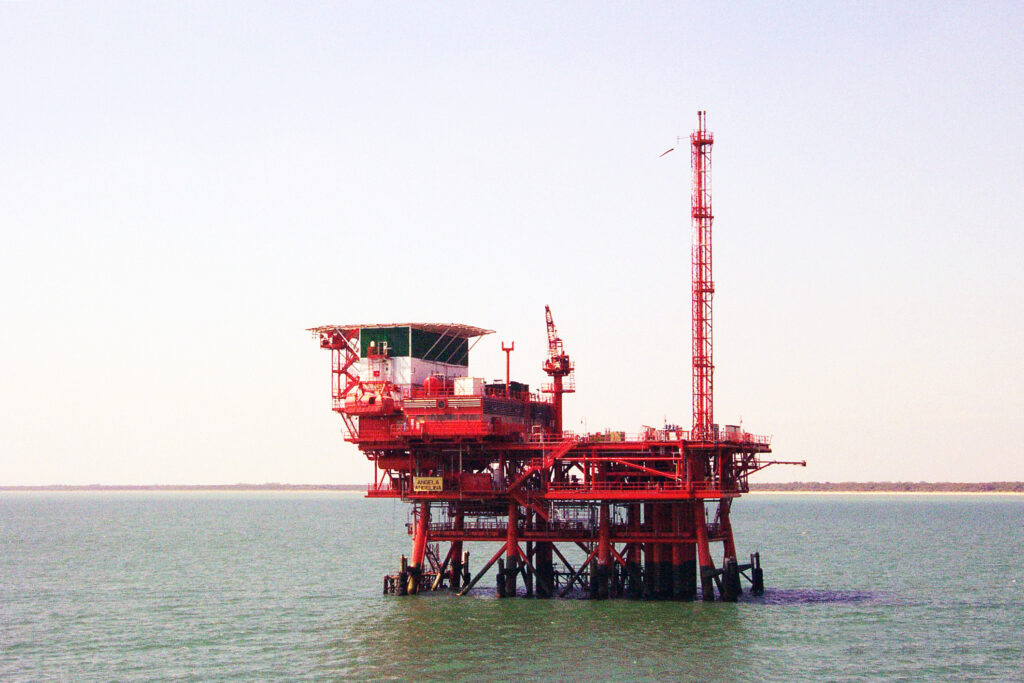
ANCONA – From the rise of sovereigntism to the end of the Nation State. Robert D. Kaplan presents in Adriatic: A Concert of Civilizations at the End of the Modern Age a journey between both shores of the Roman Mare Superum (higher sea), looking for answers to our time’s questions.

In August 2022, among all the issues discussed in front of a large group of quite worried foreign journalists, the then candidate for Prime Minister Giorgia Meloni talked of the strengthening of Italy’s seaports along the Adriatic Sea. In doing so, she officially opened the electoral campaign for Italy’s national elections of 2022 in Ancona, Marche’s most important town – known to be a leftist city – rather than Rome, Milan, or Naples. After all, the Regional governments of Marche and Abruzzo, two small regions that face onto the Adriatic Sea, were the first ones to be led by ‘Fratelli d’Italia’, Meloni’s Party. “No wonder – says Robert D. Kaplan interviewed from New York – the Adriatic has always been the gateway to the east not only for Italy but for the whole European continent1, it is here that Catholic and Orthodox religion clash, the first and second Rome (Byzantium) and the old imperialists dreams, from the Serenissima2 to Gabriele D’Annunzio, were founded on this not so purely Italian side. The 21st century sees geography shrinking thanks to global trade, China and the Indian Ocean will soon be much closer than people think and if Italy wants a century of prosperity, then it needs dynamic Adriatic ports.” Even before COVID-19 and the war in Ukraine, the Adriatic Sea saw the international geopolitical focus return to its waters because of the Chinese project of the Belt and Road Initiative. After decades of economic depression for Italian harbors, signs of this new course were the purchase of the harbor terminal of Trieste by the Hamurg Hhla Company3 , as well as Montenegro’s debt with China for building a highway4 and other Chinese efforts of penetrating into local economies of this area which are well known and immediately denounced by Western media. The energy crisis of 2022 did the rest, stressing the importance of alternative pipelines to the Russian ones as the TAP (Trans Adriatic Pipeline) from Azerbaijan and dozens of largely abandoned marine platforms. First the renewed interest in the Adriatic was explored in the book by Egidio Ivetic, History of the Adriatic (Polity Press 2022), followed by Kaplan, Adriatic. A Concert of Civilizations at the End of Modern Age (Penguin Random House, $ 28.99) giving a boost to the geopolitical dignity to this small sea. According to Fernand Braudel5 and Predrag Matvejevic6, the Adriatic sea condenses all topics and issues of the Mediterranean. But Kaplan goes further: “Here Europe is distilled in a clear geography understandable to all. It’s a miniature Earth. In fact, the subtle differences between the civilizations of the Adriatic today concern the whole world. The age of populism which media talk about is only an epiphenomenon, the swan song of the era of nationalism. Consequently, the Adriatic is the elegy to a category of opposites that I have spent my life observing.”


Perhaps Kaplan’s latest work is – against all expectations – his most intimate text. In fact, it is well perceived that it comes from a travel diary, thanks to his talks at length about his favorite poets, Ezra Pound (American) and Joseph Brodsky (Russian), both buried, not by chance, in Venice: “It’s definitely my most private book, not exhaustive because, for example, all the Middle and Lower Italian Adriatic is missing, it is based on a personal experience and on my literary and artistic obsessions, so it doesn’t want to be complete, I’m a generalist and certainly not a specialist”. Professor at the Foreign Policy Research Institute in Philadelphia, former Pentagon and White House consultant, son of a truck driver from New Jersey, he is also a master of understatement. His journey in the book starts in Rimini, from the Malatesta Temple by Leon Battista Alberti and Piero della Francesca, cornerstone of the Renaissance and burial place of Gemistos Plethon, the last great Byzantine philosopher to whom we owe the rediscovery of Neoplatonism. Sigismondo – protagonist of The Malatesta Cantos – retrieves the remains in Mystras, near Sparta, to save them from the Ottomans and therefore from the oblivion. It is a pity that Marche region is missing from the book, including the archaeologist Cyriac of Ancona, the sculptor George the Dalmatian, the architect Luciano Laurana, the Jesuit Matteo Ricci, known to the Chinese as “Li Madou”, the Tibetologist missionary Francesco Orazio della Penna, the Indologist and Buddhist expert Giuseppe Tucci: for some existential reasons here, as Geminello Alvi wrote, the gaze turns to the east or better to the Levant: “because here the air is salty even on the inside hills, and you do not need to see the tamarisks to catch the smell of our all grey Adriatic, and the scent of beautiful melancholies.” According to Kaplan, the mare superum, as Livy used to call it, is a microcosm capable of brightening the entire world thanks to the preponderant role that it’s going to play in the coming years. So, it’s inevitable that the journey continues towards Ravenna – “as Theodoric and Dante shaped the West” – Venice, and finally Trieste, where Claudio Magris welcomes him at the Antico Caffè San Marco: “a spacious but also intimate environment…something quite similar to Austria-Hungary and Manhattan too, like a complex, evolved and restless civilization.” The author of Danube (Farrar, Straus and Giroux 2008) and Microcosms (Random House 2011), explains to Kaplan how Italian and Slavic identities are closer than they seem to be, for example, in his identity and his wife’s (Marisa Madieri, born Madjari), who died in 1996 and spoke Croatian when she was a child in Fiume/Rijeka. Thus, Magris relaunches the specter of Joseph Roth in The Emperor’s Tomb (Die Kapuzinergruft ,1938) , where the only distinctive sign of the “true aristocrat” is to place himself “above every nationality”, in the tradition of the Habsburgs who, however, from the XVIII century, wanted to dominate the Adriatic granting the free port to Trieste and building the railways to Istria, Dalmatia, Hungary, Ukraine, Galicia, etc. thus giving the infrastructure backbone to the future twentieth-century nation states.


Although the book is divided equally between the two shores of the mare superum, the passage to the Balkans is a return. In 1993 Kaplan published one of his best-selling books, Balkan Ghosts. A Journey Through History (St Martin’s Press 1993), which took on the civil war of the South Slavs and anticipated it: “But today Croatia has changed in a very immeasurable way, it’s a totally different society from the one of 30 years ago, I know pretty well Rijeka… It’s a Mediterranean society that welcomes every year about 15 million tourists. Then there are Montenegro, Serbia and the problems with Kosovo and Albania, which I believe are impossible to solve except under the European Union, which at the moment has many difficulties to expand.” – Yes, Europe.
Throughout the book it is difficult not to think of Kaplan’s skepticism towards the health and especially the future of the Old Continent: “Europe has enjoyed more than half a century of a golden age, when from the Cold War and then for another fifteen years or so it has remained sheltered from international wars and terrorism, protected by the US, so it was able to build a welfare model that is unique in the world. Unfortunately, today everything is changing, the US is less reliable, torn between Democrats and Republicans – never so distant in foreign policy as now – Russia will always be a problem even after Putin, also the dictatorships of North Africa and the Middle East are no longer there and migrants are free to go from the Sahara or the Euphrates to Europe that I call ‘Benevolent Empire’ – I call it so because anyway, the lives of states like Greece or Bulgaria depend on decisions of a just a few people in Brussels – and I believe that its future depends on its expansion capacity and the outcome of the war in Ukraine, which is obviously a separate history.” In this book Kaplan is also known for his ability to predict, as in the case of Yugoslavia or Ukraine, while dedicated to an existential and paradoxical space – how can such a multicultural genius loci be existential? – he sees a possible way out in another return to the past. In almost all continents, meanwhile, cities are transformed into megacities and autonomous regions-states, so here too a world of so many transnational city-states could come true as Dubrovnik once was, so many mini-Singapore and mini-Dubai, faithful to business and trade, instead of a national power or a political philosophy. We then point out to him that Professor David Abulafia of the University of Cambridge, an expert on the medieval Mediterranean, is a great admirer of the slender commercial bureaucracy of the city of the Hanseatic League that facilitated political relations between all the city-states of that Hanse, a model that recently contrasted controversially with the European Union and its legislative excess: “I think it is a very good example of what the Adriatic Sea could become, a south-eastern Hanse that constitutes an archipelago of commercial city-states that can contain border pressures with what we once called the Levant. Many magnificent ports like Piran, Split, Zadar, Dubrovnik, Kotor, Durres that in the past have already been autonomous entities, so why not again?”


An open border, therefore, is peaceful because it is based on trade and not on military order. But here comes a spontaneous objection: how can the weakening of the nation state be reconciled with the resurgence of nationalism in Italy, Poland, Hungary, the US, Russia, Israel, India, China, and everywhere else?: “Nationalisms are strong, of course, but they can never be as strong as in the 1930s, when humanity did not travel, everyone was rooted in a place, and no one traveled to Africa or the Persian Gulf. Globalization is unstoppable and tourism, which is one of its many forms, has altered today some cities in theme parks while they once were alive. Here again, the Adriatic offers the highest planetary example that is Venice, the most commercial tourism destination in the Mediterranean sea well represented by those giant floating refrigerators that are the big ships, which perhaps will now end up in Trieste. All the right-wing nationalist parties basically have in common just the fear of migrants and their consequent pushbacks. They would collapse without migrants.” However, with the current migratory pressure from Africa and Middle East, the right-wing future remains bright, even if, he explains, the old Roman map of mare nostrum is returning because Maghreb and the rest of North Africa have been united to Europe, speaking Latin even centuries after the Islamic conquest, as demonstrated by the Sicilian-Norman kingdom of Africa wanted by Roger II7. In other words, the division between North Africa and Europe will diminish8 and the European center of gravity will have to move from the Franco-German axis towards the Mediterranean. Moreover, for its low population density and the remoteness from large centers, the Adriatic has been the testing ground for new architectural types, from pre-modern ones such as the lazaret hospital (invented in Venice in the fifteenth century) to the postmodern ones like the discos (invented in Rimini in the 60s) to spend the nights in the suspended time of holidays then celebrated by Pier Vittorio Tondelli, Luigi Ghirri, and Guido Guidi, from the B movies about summer holidays (but also from that melancholic auteur films by Federico Fellini, Michelangelo Antonioni, Valerio Zurlini) to the ephemeral and kitsch seaside architecture of Romagna. Kaplan instead notices an urban change well known to architects, less to political scientists: “The postmodern world is often neither urban nor rural, but a negation of both.” Looking out the window of the train from Rimini to Ravenna, where the coast is very different from that of Liguria or Campania regions, the city never stops in fact: the countryside enters the city and vice versa in a continuous strip of (what used to be) the city, to summon Rem Koolhaas9.
“The increase in population from seven to eleven billion by the end of this century means crowds of people in the outskirts of towns that create urban environments devoid of aesthetic quality, as opposed to the European museum-cities, full of monuments, squares and cafes. Modern architecture has been set against the individual, without proper sidewalks or pedestrian spaces, at least since the 1960s.” This no-stop Adriatic city is more visible on the Italian coast than on the eastern shore, a bit for topographical reasons, because it is more jagged, and a bit because of the long communist regime that slowed its development. Even in this, the Adriatic is closer to China than to France or to the Netherlands, the Adriatic city is a strip densely urbanized and populated by medium-small enterprises, like the ‘modellaccio’ (bad model) studied by the economist Giorgio Fuà in the 70s, which thanks to its ports, maybe, can be born again.
1 Manuel Orazi, Marco Vanucci, The Adriatic: An ancient door to a new world order, in Michael Obrist, Antonietta Putzu (Eds), The Last Grand Tour. Contemporary phenomena and strategies of living in Italy, Zurich, Park Books 2023, pp. 286-297.
2The Venetian Republic since the XVII century was called Most Serene Republic of Venice, Serenissima in Italian.
3After the article of Jason Horowitz, A Forgotten Italian Port Could Become a Chinese Gateway to Europe, “The New York Times”, March 18, 2019, expressing alarm for the Chinese interest, the agreement with the German company was accelerated.
4Andrew Higgins, A Pricey Drive Down Montenegro’s Highway ‘From Nowhere to Nowhere’, “The New York Times”, August 14, 2021.
5Fernand Braudel, The Mediterranean and the Mediterranean World in the Age of Philip II, Berkley, University of California Press, 1996.
6Predrag Matvejević, Mediterranean: A Cultural Landscape, Berkley, University of California Press, 1999.
7Roger II or Roger the Great (1095–1154) was King of Sicily with his capital in Palermo. He conquered for a few decades the coast of Tunisia and enlarge his dominions to Tripoli and Cape Bona, thus enlarging the State to North Africa, see David Abulafia, The Crown and the Economy under Roger II and His Successors, “Dumbarton Oaks Papers” Vol. 37, 1983, pp. 1-14.
8According to Henri Pirenne, Mohammed and Charlemagne, London, Allen&Unwin 1939, the great divisinon between the two borders of the Mediterranean was caused by the expansion of Islam and the Arab language in the South, thus ending the traditional koine of the ancient Roman mare nostrum.
9Rem Koolhaas, Testi sulla (non più) città, edited by Manuel Orazi, Macerata, Quodlibet 2021.